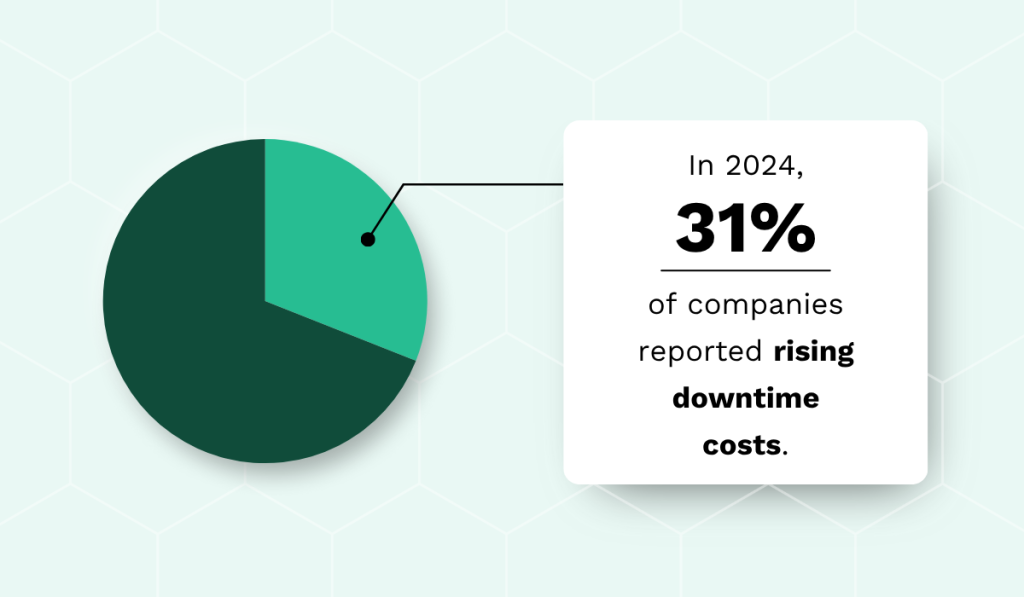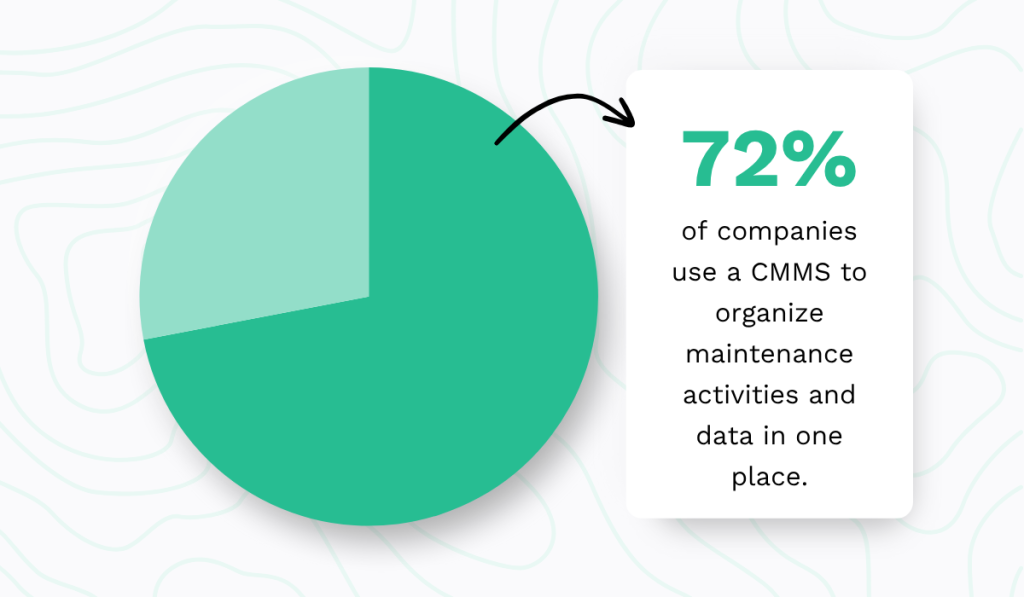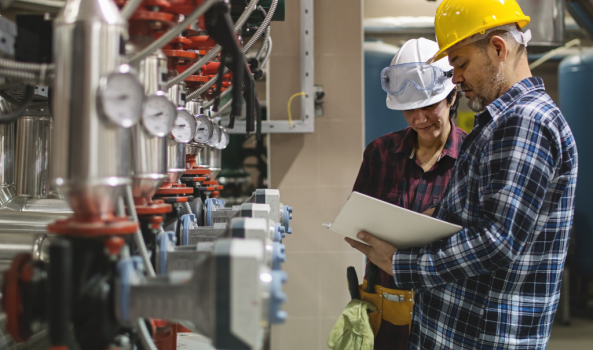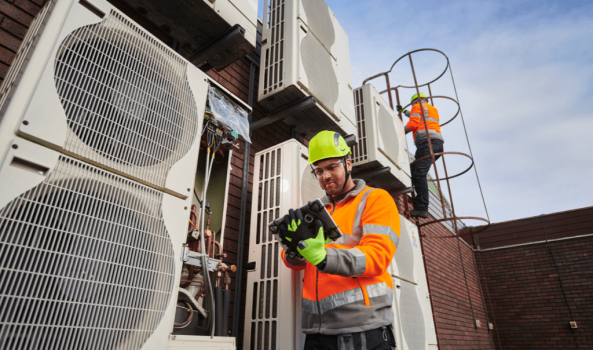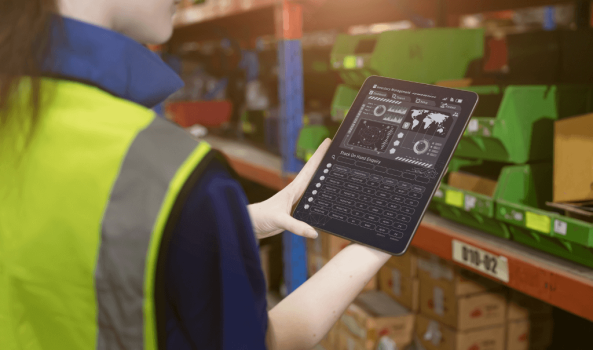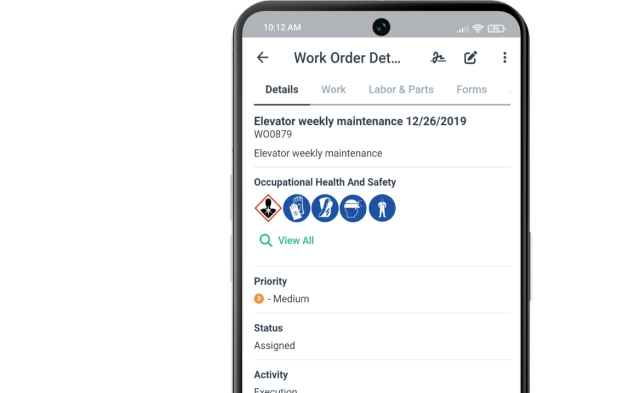Get a Free WorkTrek Demo
Let's show you how WorkTrek can help you optimize your maintenance operation.
Try for freeKey Takeaways:
- Maintenance costs must include both direct and indirect expenses for accurate analysis.
- Downtime, safety risks, and lost productivity represent major hidden costs.
- A CMMS standardizes the recording of labor, parts, and service costs.
- Comparing planned vs. actual costs improves budgeting and forecasting.
Maintenance costs are more than the numbers in the budget.
They are a direct reflection of how efficiently your facility runs and how effectively your assets are managed.
Yet, many maintenance teams still struggle to measure these costs in a consistent, actionable way.
What should be included as a maintenance expense? How do you track and categorize it? And how can you use that data to improve operational performance?
This guide is here to help you answer these questions and more.
From defining your cost categories to leveraging a CMMS and analyzing asset-level spending, you’ll learn how to measure maintenance costs in a way that strengthens budgeting, reporting, and long-term planning.
1. Define the Scope of Your Maintenance Costs
The first step in measuring maintenance costs is to define exactly what will be included.
Without clear boundaries, your analysis can quickly become inconsistent or misleading.
Begin by separating costs into two categories: direct and indirect.
Direct maintenance costs are linked to maintenance work.
They typically include:
- Technician labor
- Replacement parts
- Contractor fees
- Tools and consumables
These are relatively straightforward to track since they appear in work orders, invoices, time sheets, and purchase records.
As Eric Woltz, Garage Management System Liaison at Holman, notes, these costs may seem simple when viewed individually, but can be substantial when aggregated across all activities.
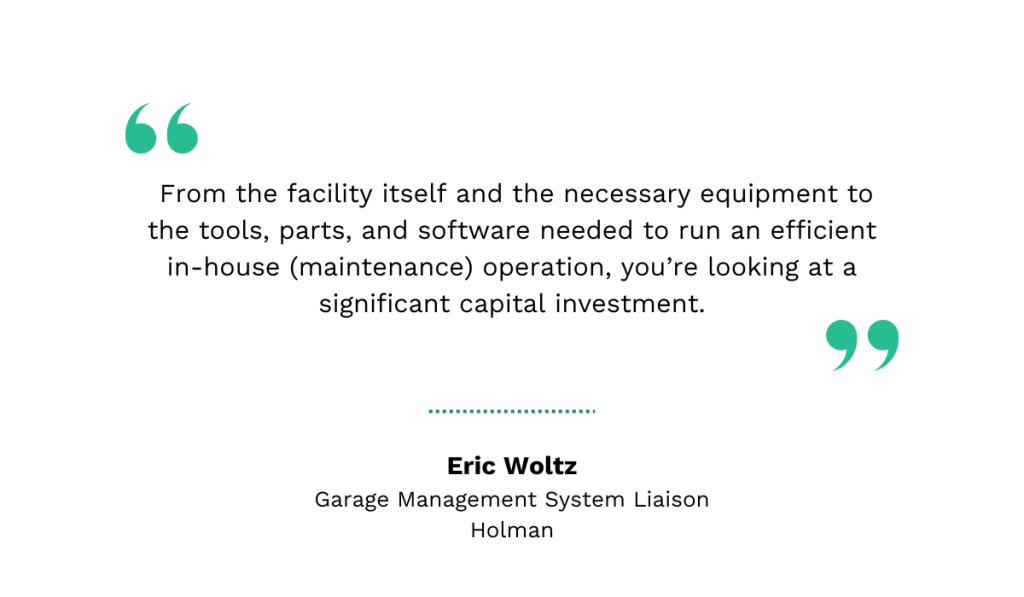
If some of your maintenance work is outsourced, be sure to include external vendor costs, service agreements, and support contracts in your direct cost calculations.
These services directly support your maintenance program and must be accounted for.
Indirect maintenance costs are less visible but equally important.
They include:
- Lost production due to unplanned downtime
- Health and safety incidents
- Emergency part shipments
- Reputational damage due to delays
These costs may not be immediately apparent in a maintenance report, but they impact overall business performance and increase your total cost of ownership.
And the scale of indirect costs is growing.
In 2024, 31% of companies reported increasing downtime costs, highlighting how much is at stake when equipment reliability is compromised.
Including both direct and indirect costs in cost calculations gives you a more accurate view of your maintenance spending.
Without that, you risk underestimating the value of preventive maintenance or missing the true cost of system failures.
2. Capture Maintenance Data Consistently With a CMMS
The next critical step in measuring maintenance costs is to capture maintenance data in a consistent, structured format.
The most effective way to do this is by using a computerized maintenance management system (CMMS).
According to recent industry data, 72% of maintenance professionals use a CMMS primarily to organize maintenance activities and data in one place.
But its value goes far beyond maintenance planning and scheduling.
It plays a central role in accurately measuring costs.
A modern CMMS records the key data needed to analyze maintenance expenses, including:
- Technician labor hours
- Parts and materials used
- Contractor or vendor services
- Additional task-related expenses
Each work order becomes a structured record of time, materials, and effort, enabling maintenance managers to see where resources are going.
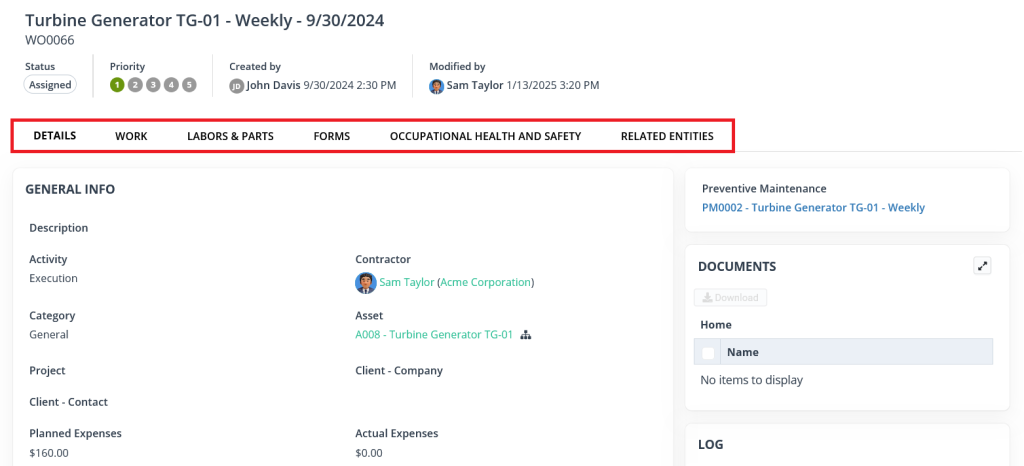
However, a CMMS is only as reliable as the data entered into it.
That’s why it’s essential to build strong habits across your team.
Technicians must:
- Open and close work orders systematically
- Log time spent on tasks
- Select parts used from the inventory
- Attach receipts or notes for any non-standard costs
A CMMS like WorkTrek streamlines this process.
Technicians can clock in and out of tasks on their phones, upload photos, leave comments, and sign off on completed work, creating a full digital trail of each job:
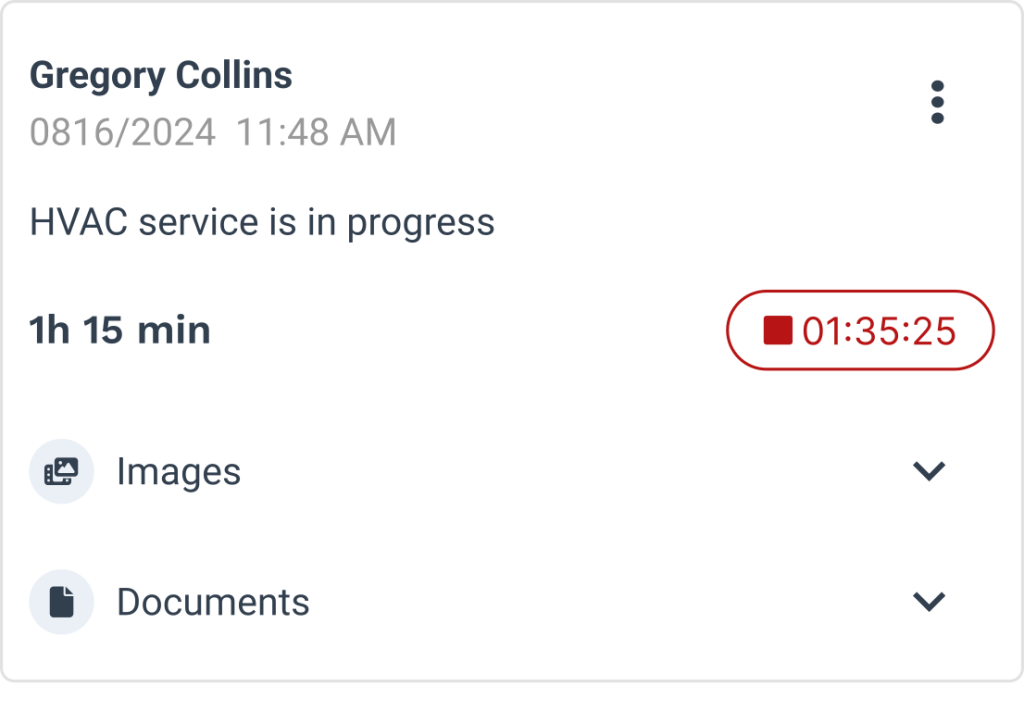
You can also link parts and labor to each job, enabling the CMMS to automatically calculate the labor cost based on technician rates and the time spent.
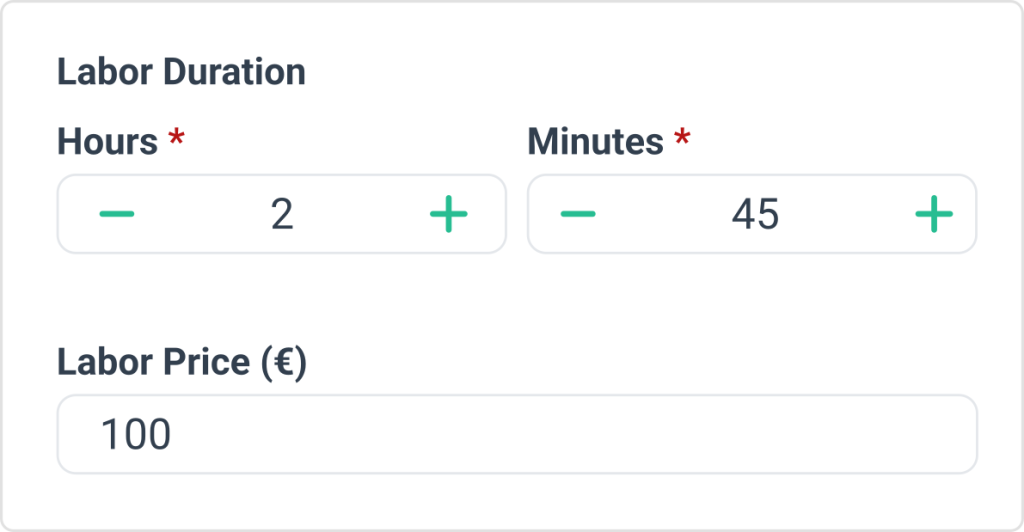
Each inventory item is assigned a cost, making the financial impact of every work order visible in real-time.
The result is a centralized, reliable dataset that eliminates the guesswork.
In other words, there’s no need to dig through spreadsheets or manually cross-reference invoices.
Your cost data is clean, complete, and ready to use for planning, reporting, and financial control.
Once this data is in place, WorkTrek allows you to generate detailed reports that go beyond raw numbers.
You can filter expenses by project, asset, or site, and visualize spending trends across the organization:
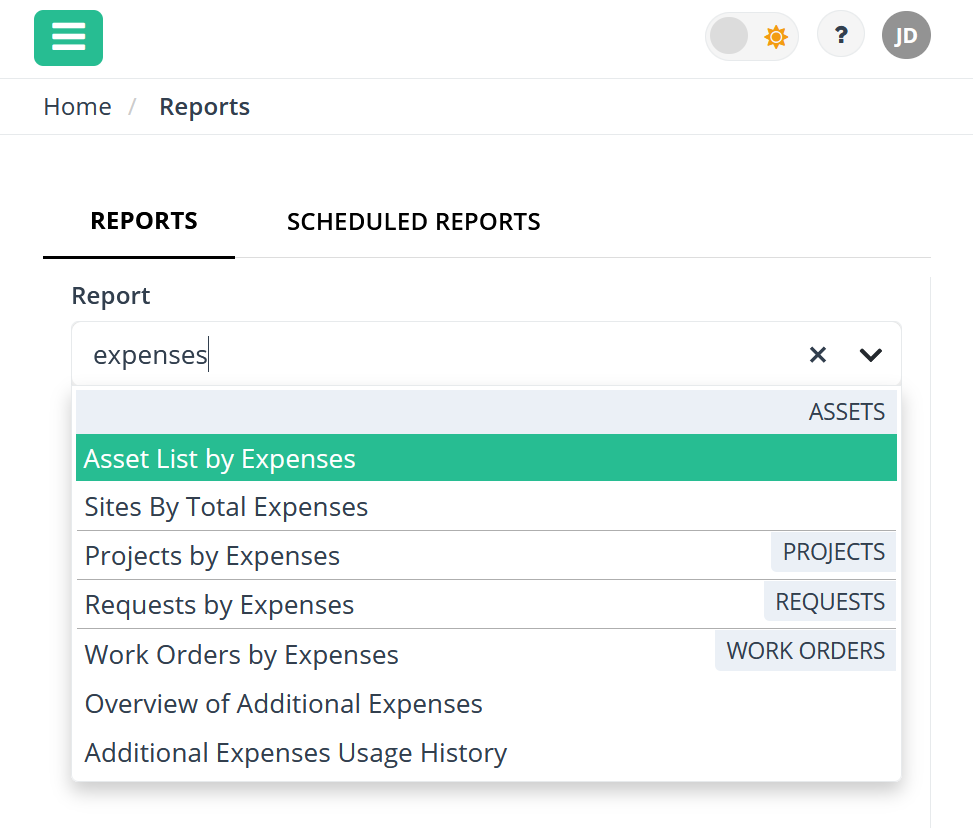
With structured reports, it becomes much easier to identify cost drivers, monitor performance, and support data-driven maintenance decisions.
3. Calculate Total and Asset-Level Maintenance Costs
When you have cost information gathered and organized in your CMMS, calculating maintenance costs is relatively easy.
Start with the total maintenance cost.
That’s the sum of all direct and indirect expenses over a defined period, as seen in this simple formula:
“Total Maintenance Cost = Labor + Materials + External Services + Other Expenses”
Labor costs are calculated by multiplying technician work hours by their respective hourly rates.
Materials and parts are tracked through usage logs and inventory data.
External services include vendor invoices, service contracts, and specialist repairs.
Other expenses may include permits, rentals, or one-time vendor charges.
By calculating these totals on a monthly, quarterly, or annual basis, you can track how maintenance spending evolves and compare it across sites or departments.
Understanding total costs is undoubtedly important.
But asset-level cost data is what reveals how individual machines or systems contribute to your overall maintenance spending.
This allows you to answer key questions:
- Which assets require the most maintenance resources?
- Are certain machines repeatedly exceeding the budget?
- Does the maintenance cost justify continued operation, or is replacement a more cost-effective option?
To answer these, use your CMMS to break down expenses by asset.
This illustrates the amount of labor, materials, and vendor support required by each machine over time.
Some platforms even allow you to set estimated costs at the work order level and then compare them to actual costs once work is complete:

These comparisons help identify recurring cost overruns, inefficiencies, and misaligned estimates.
They also support more accurate forecasting and long-term financial planning.
With complete cost data in place, you can calculate key performance indicators such as:
- Maintenance cost per unit of production
- Maintenance cost as a percentage of asset replacement value
These KPIs—especially when combined with reliability metrics like MTTR or MTBF—provide a more comprehensive view of asset performance and effectiveness of your maintenance strategy.
You should also quantify less obvious costs, like the cost of unplanned downtime, the number of emergency repairs, or the costs of expedited shipping.
These calculations reveal the full financial impact of delays and supply chain gaps—insights that are often missed in high-level budgeting.
4. Turn Cost Data Into Actionable Improvements
Collecting maintenance cost data is only valuable if it leads to better decisions.

With accurate cost reports, maintenance managers can identify trends and inefficiencies that are often obscured in day-to-day operations.
For example, if reactive tasks are consuming a growing share of the budget, it may indicate that preventive work has been missed or that scheduled maintenance has been delayed.
If one asset repeatedly requires more labor and parts than similar equipment, it may indicate poor condition, excessive wear, or even incorrect technician assignments.
By surfacing these patterns, cost data allows teams to take corrective action, such as:
- Adjusting preventive maintenance schedules
- Rebalancing workloads across teams
- Improving spare parts availability
- Renegotiating vendor rates
This level of financial visibility also supports broader planning.
Comparing actual spending to budgeted forecasts helps refine future budgets, set realistic performance targets, and justify investment in training, inventory, or new equipment.
These improvements are significant because maintenance is a major operational expense in most facilities.
A recent report found that 64.4% of plants allocate between 5% and 20% of their annual operating budget to maintenance, and nearly 1 in 5 facilities dedicate over 20% of their total budget to it.
Even small improvements in cost control can translate into a significant financial impact.
For example, if frequent equipment failures lead to costly emergency part shipments, it may be more economical to stock critical spares.
If certain repairs consistently go over budget, it may be time to revisit supplier agreements or retrain staff.
On top of that, cost reports improve communication with leadership.
Instead of requesting additional resources based on assumptions, you can demonstrate precisely where funds are allocated, where overruns occur, and what return is anticipated from improvements.
WorkTrek simplifies this with dashboards and reports that break down costs by asset, location, project, or period.
Below is a report that highlights the top five projects by asset-level expenses:
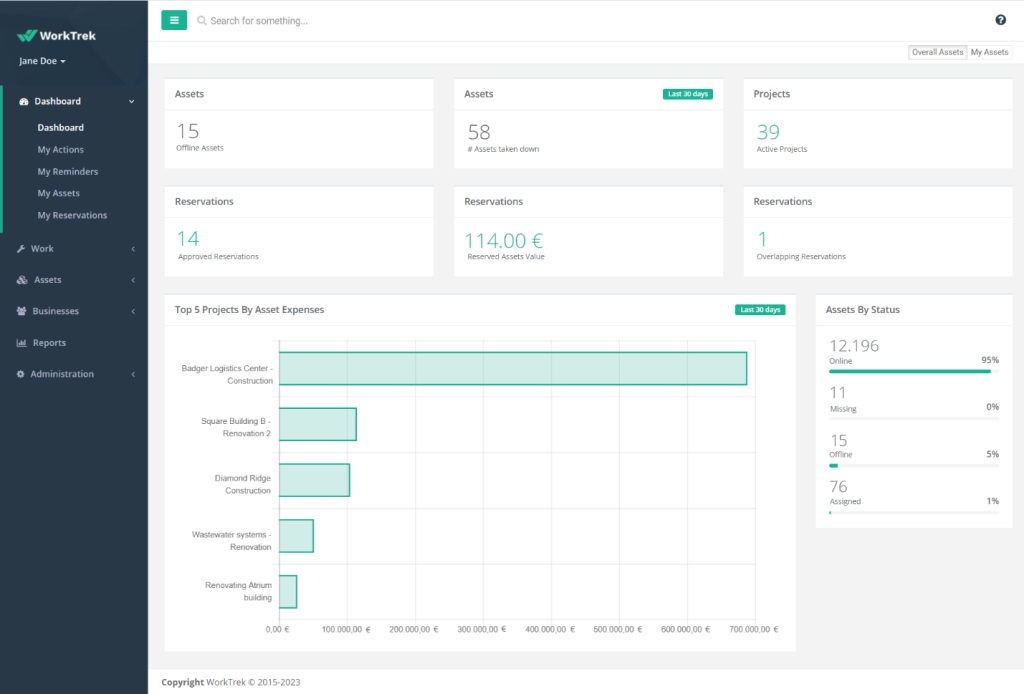
This level of clarity strengthens internal discussions, performance reviews, and audit preparation.
Ultimately, the goal isn’t just to track maintenance costs, but to gain control over them too.
With reliable data and clear reports, your team can move from reactive budgeting to proactive cost management.
This leads to smarter scheduling, fewer breakdowns, and more efficient use of labor and materials, building a stronger foundation for long-term reliability and lower total cost of ownership.
Conclusion
Labor hours, spare parts, and lost production time all contribute to maintenance costs.
Measuring these costs accurately requires clear definitions, appropriate categories, and consistent tracking methods.
A CMMS provides the necessary tools to record detailed data, analyze spending by asset, and convert numbers into actionable insights.
Rather than viewing maintenance as a fixed monthly expense, it should be understood as a strategic investment in uptime, reliability, and the long-term performance of assets.
When maintenance costs are accurately measured and used to inform decisions, maintenance becomes a source of operational improvement and business value, rather than merely a line item on the budget.




